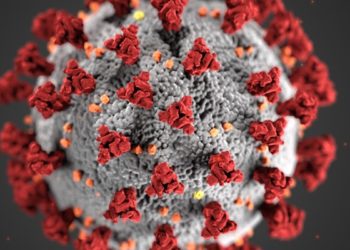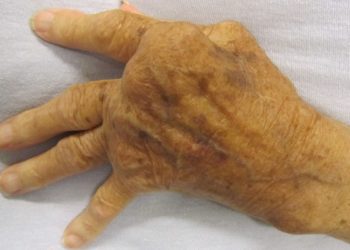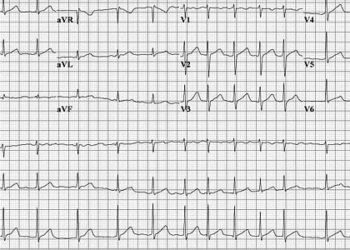2 Minute Medicine Rewind June 12, 2023
1. Among 538,967 adult participants who underwent major surgery, administration of prophylactic cefuroxime at 0-30 or 31-60 minutes resulted in a significantly lower risk of surgical site infections, compared to administration at 61-120 minutes.
Evidence Rating Level: 3 (Average)
Surgical site infections (SSIs) are an important healthcare concern, given that they account for nearly 20% of all healthcare-related infections. Though current WHO guidelines recommend providing antibiotics 120 minutes prior to surgery, there is a scarcity in literature characterizing the optimal time of antibiotic administration. In this cohort study, researchers aimed to assess whether the timing of cefuroxime administration impacted the incidence of surgical site infections. The study included 538,967 adult participants who underwent major surgery between January 2009 and December 2020 in Switzerland, documented by the Swissnoso SSI surveillance system. Participants were divided into three groups based on the timing of cefuroxime prophylaxis prior to the first incision: 0-30 minutes (34.7%), 31-60 minutes (53.1%), and 61-120 minutes (12.2%). 5355 (2.4%) of patients developed an SSI. Compared to the 61-120 minute group, a lower rate of surgical site infections was found with cefuroxime administration at 0-30 minutes (adjusted odds ratio, 0.85; 95% CI, 0.78-0.93; P < .001) and 31-60 minutes (aOR, 0.91; 95% CI, 0.84-0.98; P = .01). Findings indicate that the current guidelines may not reflect best practices, and patients may benefit from antibiotics closer to the time of incision. An important limitation of this study is that the authors did not adjust for confounding variables that likely impact the incidence of infection, such as diabetes, smoking, immunodeficiency, or the type of surgery performed. Although further research in the area is required prior to guideline and practice changes, study findings may indicate that changing antibiotic prophylaxis closer to time of incision may be a simple but effective strategy in decreasing SSIs.
1. The number of adults in Korea achieving adequate weekly physical activity decreased significantly during the SARS-CoV-2 pandemic.
2. This trend was specifically more pronounced in females, older adults, participants living in urban settings, those with higher BMI, and people with a history of depression.
Evidence Rating Level: 2 (Good)
Restrictions that existed during the SARS-CoV-2 pandemic, such as the closure of sports facilities and swimming pools, were known to impact the ability of many people to continue with their typical exercise routines. In this cross-sectional study, researchers aimed to assess trends in physical activity in Korea from 2009 to 2021; prior to and during the COVID-19 pandemic. Researchers used the Korea Community Health Survey to collect data on 2,748,585 Korean adults. Physical activity was quantified via the mean metabolic equivalent (MET) score, with physical activity assessed based on WHO guidelines, which define adequate exercise as a minimum of 600 MET-min/ week. The number of people achieving adequate weekly physical activity decreased significantly during the SARS-CoV-2 pandemic. Prior to this, the national rates of physical activity were stable. From 2017-2019, 36.0% of adults achieved sufficient weekly physical activity (95% CI, 35.9% to 36.1%). This decreased to 30% in 2020 (95% CI, 29.8% to 30.2%) and 29.7% in 2021 (95% CI, 29.5% to 29.9%). This trend was most pronounced for people with a normal BMI (β difference,−12.5; 95% CI, −13.4 to −11.7), a history of depression (β difference, −13.7; 95% CI, −19.1 to −8.4), females (β difference, −16.8; 95% CI, −17.6 to −16.0), and people living in urban settings (β difference, −21.2; 95% CI, −22.2 to −20.2). In summary, findings suggest there may be a negative correlation between the COVID-19 pandemic and physical activity. This demonstrates yet another health impact of the COVID-19 pandemic and may be used to inform future policymaking and counseling for at-risk groups should another similar crisis occur.
1. Infrequent, light, or moderate alcohol consumption was associated with a reduced risk of all-cause mortality.
Evidence rating level: 2 (Good)
It is well known that heavy alcohol consumption is connected to detrimental physical and social consequences. Researchers aimed to assess the association between light to moderate alcohol consumption and all-cause and cause-specific mortality. This prospective population-based cohort study collected data from the National Health Interview Survey, which includes self-reported alcohol consumption for 918,529 adults in the United States from 1997 to 2014. The mean age of participants was 46.1 years. Participants were followed for an average of 12.65 years. During the follow-up period, 141,512 adults died from all causes. Compared to those who consumed no alcohol (lifetime abstainers), a lower risk of all-cause mortality was found for infrequent (HR 0.87; 95% CI, 0.84 to 0.90), light (HR 0.77; 95% CI, 0.75 to 0.79) or moderate (HR 0.82; 95% CI, 0.80 to 0.85) consumers. Infrequent, light, or moderate alcohol use was also associated with a lower risk of cause-specific mortality due to CVD, chronic lower respiratory tract diseases, Alzheimer’s disease, influenza, and pneumonia. Compared to lifetime abstainers, heavy drinkers had a greater risk of all-cause mortality (HR 1.07; 95% CI, 1.03–1.12), cancer (HR 1.24; 95% CI, 1.14–1.34), and accidental injuries (HR 1.48; 95% CI, 1.22–1.80). It is important to note that the study did not specifically assess deaths due to GI pathologies or mental illnesses, which are known to be connected to alcohol use. The study also did not determine whether participants’ alcohol consumption changed over time during the follow-up period. Nonetheless, study findings corroborate a recent paradigm shift in literature and guidelines, in which even light or infrequent alcohol consumption have been linked with detrimental health outcomes.
Trends in cognitive function before and after stroke in China
1. A first episode of stroke was found to precipitate an acute decline in cognitive function for adults in China.
Evidence Rating Level: 2 (Good)
Strokes are a known risk factor for the development of cognitive decline and dementia. Previous research has not addressed whether a degree of cognitive decline may exist prior to stroke or the timeline of decline following stroke. Researchers collected data on 13,311 adults over the age of 45 in China. At baseline, participants had no known stroke history. Their cognition was assessed initially between June 2011 and March 2012, with a subsequent 7-year follow-up period. During this time, 4.6% of participants had a first stroke. When comparing the stroke and stroke-free participants, both groups showed a similar rate of cognitive decline before stroke onset, as expected with aging. In the years following stroke onset, the stroke group had an acute decline in episodic memory (β,−0.123 SD; 95% CI,−0.227 to−0.019; P=0.021) visuospatial abilities (β,−0.169 SD; 95% CI,−0.292 to −0.047; P=0.007), and global cognition (β,−0.135 SD; 95% CI,−0.228 to−0.042; P=0.004), as well as an accelerated rate of decline for calculation, attention, and orientation skills (β,−0.045 SD; 95% CI,−0.073 to−0.017; P=0.001). A notable limitation is that researchers relied on participants’ self-reported experience of stroke, which was not confirmed with medical records. Future research may assess these trends over a longer follow-up period, as well as the effect of multiple strokes on cognitive trajectories.
1. Patients with pre-diabetes who were hospitalized with COVID-19 had a greater risk of developing type-2 diabetes mellitus, compared to hospitalized pre-diabetic patients without COVID-19.
Evidence Rating Level: 2 (Good)
Recent observations and case reports have suggested an increased risk of developing new-onset type-2 diabetes (T2D) following COVID-19 infection. Researchers aimed to determine the incidence of new-onset diabetes following COVID-19 infection for participants with preexisting prediabetes. Data were collected from medical records using the Montefiore Health System in Bronx, New York. Researchers compared 42,877 patients with COVID-19 and a history of pre-diabetes to a propensity-matched group of 9306 pre-diabetic patients without COVID-19. Two primary outcomes were assessed: the incidence of new-onset in-hospital DM and new-onset persistent DM at a 5-month follow-up. Compared to hospitalized patients without COVID-19, hospitalized patients with COVID-19 had a greater incidence of new-onset DM (21.9% vs 6.02%, p<0.001) and persistent DM (14.75% vs 7.51%, p<0.001). The same trend was not observed for non-hospitalized patients. Researchers postulate that the physical and mental stress of hospitalization, as well as the steroids used to treat severe COVID-19 infections, may contribute to the development of DM. This study demonstrates that patients with pre-diabetes who are hospitalized for COVID-19 may benefit from more careful surveillance of their glycemic control.
Image: PD
©2023 2 Minute Medicine, Inc. All rights reserved. No works may be reproduced without expressed written consent from 2 Minute Medicine, Inc. Inquire about licensing here. No article should be construed as medical advice and is not intended as such by the authors or by 2 Minute Medicine, Inc.









